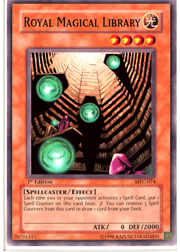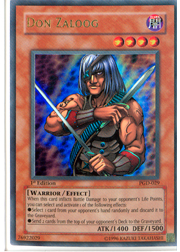Choosing the right deck is more than just making an accurate metagame call: it’s also a matter of matching it to your skill level and luck tolerance. There are fundamental characteristics of aggro decks, control decks, and combo decks that need to be taken into account when building a deck:
Skill required.
Luck required.
Interaction with the opponent.
The style of deck that you pick should generally match your skill level, your tolerance for luck, and how much you wish to interact with the opponent. The most reliable measure of skill is the ability to make accurate decisions during gameplay.

The Aggro Deck and the Aggro Player
In terms of luck, aggro decks are pretty dependent on good-to-excellent opening draws. Most of the time, these decks don’t have the room to include cards that can provide more consistency like draw power and deck searching effects. Consistent aggro draws often depend on packing multiple copies of cards that can create high-pressure situations in your deck, or ones that work well when your opponent’s game is simplified. The Six Samurai is a great example of the above characteristics. While it is a good deck archetype, the amount of luck required and the overwhelming speed and power of the control decks prevented this deck from succeeding until just this past weekend.
These decks typically have low-to-moderate interaction with the opponent. They aren’t reactive decks because they present the threats for the opponent to respond to. These decks look for openings to exploit, induce the opponent to provide those openings, or simply create them with brute force tactics. The aggro player’s mantra is always, "There’s no time to waste. The longer my opponent stays in the game, the lower my chances of winning." If you are playing an aggro deck, please keep that in mind. Place "beating face" as a priority over countering your opponent’s plays.
If you’re trying to get better at the game, then playing an aggro strategy is generally not recommended. The drawback to the pilot of the deck is that it’s too easy to play: you don’t have to think at all. They are built to obtain quick wins by stealing victory before the opponent can force you into complex situations. They are very fun (believe me I know), yet they need to be played flawlessly in order to win a tournament. Once a better player can create situations where he can outplay you, you will be out-played (unless your deck is that good and the metagame simply cannot handle it, in which case then yes, play the deck and win the tournament). It’s a rare sight in the Yu-Gi-Oh! TCG when a true aggro deck wins a major event.

The Combo Deck and the Combo Player
In case you haven’t noticed, the top builds these days are pseudo-combo decks that use some kind of power combination to put the deck many turns ahead of the opponent before he or she can even participate in the game. Perfect Circle is excellent at this. Whether it’s early, mid, or late game, a Perfect Circle player drawing four to six cards in one turn is not unheard of. [Raiza the Storm Monarch] and [Phoenix Wing Wind Blast] are natural compliments to these short bursts of speed, keeping your opponent even further behind.
Diamond Dude Turbo is the quintessential combo deck that everyone hates to play against. Most players are simply not prepared to handle it either in their main decks or side decks, and it requires no interaction with the opponent. By design, it simply does not care what you, the opponent, can do as long as the combo can be achieved to swing for game. The drawback to you, the combo player, is that combo decks require almost no skill whatsoever. You usually won’t get any better by playing a deck like this. Since your plays are based on math and your only concern is the combo, there is no need to think. Once you settle in, you know exactly what combination of cards to play to produce the desired effect without having to worry about your opponent.
The Demise OTK is not equipped to handle turn-by-turn interaction with the opponent. This may seem like an incorrect analysis because of the beastly stats of your deck’s monsters, but trust me it’s not. Most OTK decks are designed for players who are not skilled enough to wield decks that require many decisions, because more complex decisions generally require more experience and skill which the lesser player does not have. The less experienced player (and I use the term "lesser" very loosely) can win as many games as the skilled player if he or she can execute a combo consistently enough.

The Control Deck and the Control Player
Control strategies thrive in complex game situations. These decks create such situations by introducing more cards into the game via drawing, search, self-replacing, and a tight grip over what gets destroyed and when. The whole concept is based on keeping the game as complex as possible. Aggro decks naturally hate complexity and combo decks are forced to interact with the game against a well-built control deck which reduces their chances of winning. With a control build, you can minimize the luck factor to a greater degree. You also have the advantage of tuning your deck to the metagame much more reliably by building your deck to attack from many different angles.
The biggest mistake a skilled duelist can make is playing a deck that requires less skill and less interaction with the opponent. As my good friend Glenn put it, "You’re giving up your basic advantage—you are your most valuable asset." An excellent player’s basic advantage is his or her ability to make better decisions than the opponent. Not playing a deck that requires decisions in a major tournament and playing a combo deck instead is like throwing away your money at the slot machine: you’re leaving your victory to chance.
Concepts at a Glance
To summarize my opinions, the characteristics of each type of deck can be illustrated by the following list:
Aggro: Low Skill, High Luck, Low-to-Moderate Interaction
Combo: Low Skill, Low Luck, Zero Interaction
Control: High Skill, Low Luck, High Interaction
Please realize that this article isn’t about proving that one deck style is superior to another. Rather, I want it to convey the premise that you should play a deck that suits your skill level and tolerance for luck. If you want to get better at the game, then start playing decks that require more decisions. All highly skilled players are excellent at making the correct decisions in complex game situations. Don’t waste your time kidding yourself and gambling with your entry fee. I believe that a solid understanding of how the different deck styles function will take you a long way in any card game. Remember that aggro and combo decks have to be built with at least as much care and precision as a finely tuned control deck if you want to overcome the advantages of flexibility that control decks enjoy.
Thanks for reading! Have a great week!
—Bryan Camareno